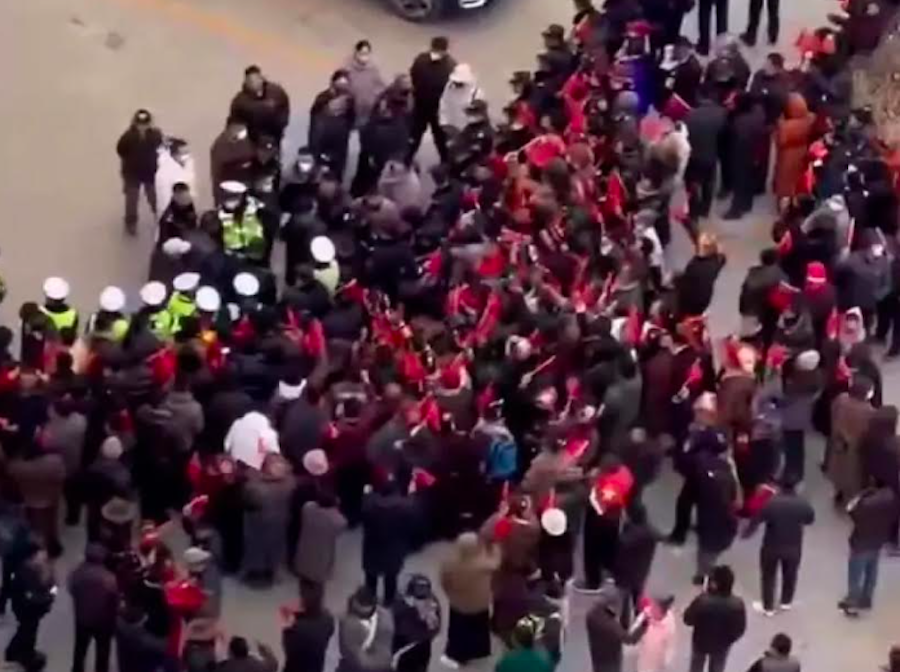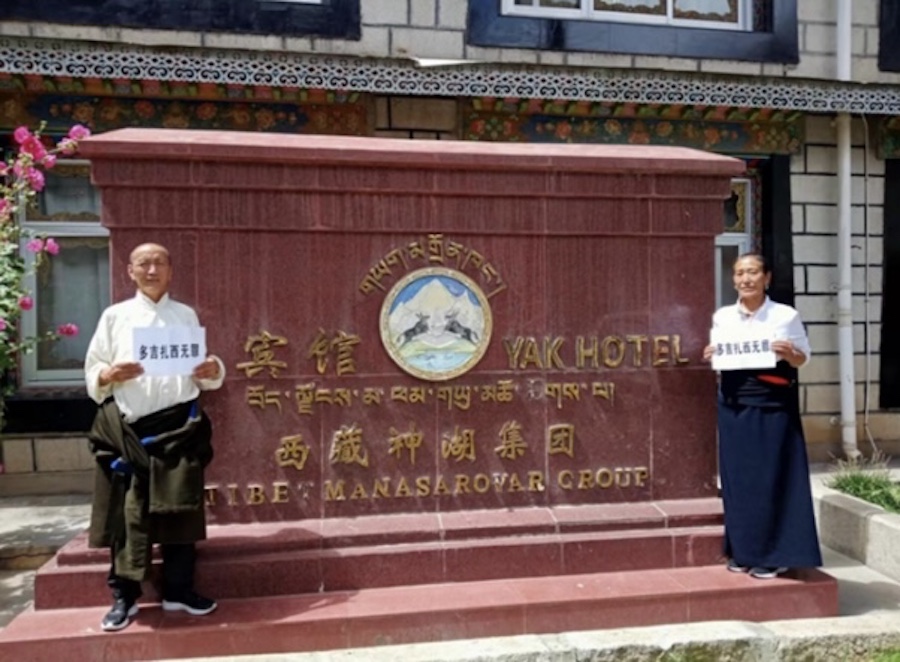By Tsering Dhundup
DHARAMSHALA, Mar. 1: Around 40 Tibetans have been released from among more than 1,000 people arrested by Chinese police for protesting against a dam project that threatens to submerge ancient monasteries and several villages, according to various sources.
Chinese authorities released about 20 monks each on Monday and Tuesday, said the sources who spoke on condition of anonymity for safety reasons. “One of the main reasons for the release of the Tibetans is the growing media coverage abroad of the mass arrests that have taken place,” one source told RFA. International coverage including watch dog Human rights Watch has called for the release of those detained in the aftermath of the protests.
Some of the arrested Tibetans were beaten during the interrogations and later admitted to the hospital. They were also informed individually at the hospital that they would be allowed to return to the monasteries but authorities forbade them to communicate with outsiders, on Wednesday, the same source said. Chinese police have also imposed strict restrictions on the movement of monks to and from the various monasteries located on both sides of the Drichu River, the same person said.
“The Chinese authorities have long been hostile to public protests, but their response is especially brutal when the protests are by Tibetans and other ethnic groups,” said Maya Wang, acting China director at Human Rights Watch. “Other governments should press Beijing to free these protesters, who have been wrongfully detained for exercising their basic rights.”
Reports say that at least 300 villagers travelled to Derge County in Sichuan province on February 14, to protest the building of the Kamtok (Tibetan: sKam thog, Chinese: Gangtuo) dam. Video footage shows villagers from the area of Wontoe protesting the dam’s construction. The dam is the sixth in a proposed series of 13 on the Dri Chu River, known as Jinsha or the upper Yangtse River in Chinese.
Five major hydroelectric dams are already in operation or under construction along this stretch of the river, with an installed capacity of 8.6 gigawatts. By comparison, the world’s most powerful hydro dam, the Three Gorges, lower down the Yangtse River, has a generating capacity of 22.5 gigawatts. All of this electricity is sent from Tibetan areas through the Ultra High Voltage “West to East” (xi dian dong song) transmission infrastructure, due to be completed by 2025.
Since 2017, Chinese authorities have relocated over 11,000 people from 7 townships in Gonjo and Markham counties bordering the Jinsha River for “poverty alleviation” reasons, according to official figures, for reckless state projects including the construction of dams.
The right to protection against forced eviction derives from the right to adequate housing as provided under the International Covenant on Economic, Social and Cultural Rights, to which China is a state party. According to the United Nations Committee on Economic, Social and Cultural Rights, which monitors state compliance with the covenant, for evictions to be lawful they must be “solely to promote the general welfare in a democratic society,” and carried out “in strict compliance with the relevant provisions of international human rights law and by general principles of reasonableness and proportionality.”
These safeguards include, for example, that the government explores “all feasible alternatives” before eviction, and that it provides an opportunity for genuine consultation with those affected. Mass evictions carried out in Tibetan areas often have not met these basic standards, Human Rights Watch said.











One Response
stop building dams. Dams benefit chinese people mostly, and not Tibetan people in Dege in Kham. In fact, they give little electricity to ethinic Tibetans, like 2%, and divert the rest of electricity to Beijing. All constructions and development by Xi jinping are deceptive, manipulative ventures to destory Tibetan religion, culture, language, way of life, while pretending that they are for Tibetan people. Tibetan people are against all dams inside Tibet, we don’t want electricity in the first place. That’s manipulation to benefit chinese people, not Tibetan people. recently china has started c919 aeroplane in singapore airshow for Tibet Airlines, but that’s just a ruse. They want to destroy us into dust while pretending to help us become civilized. we Tibetans focusd on hh dalai lama and buddhism and meditation and kindness. WE are against material development, for they are just illusions, like bubbles in a stream or a mirage. True happiness comes from genuine practice of compassion and self lessnes.